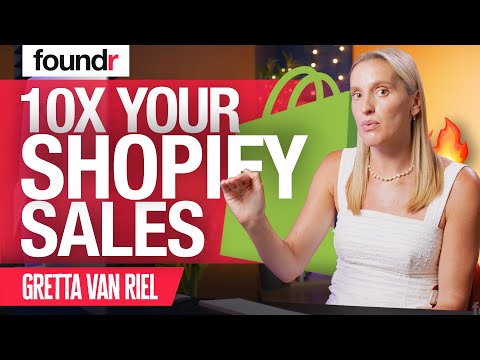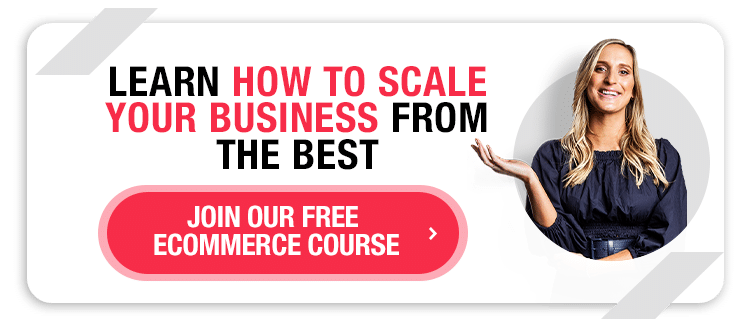There has never been a better time in the history of the world to have an ecommerce business. Yes, that’s a bold statement. But it’s a proven fact that more people are buying more things more often than at any other time.
Globally, the confidence and comfort levels of making purchases online are soaring. The research underscores just how ubiquitous and important ecommerce has become.
- In 2019, just 13% of sales were online
- In 2021, that figure had increased to 19%
- Annual global ecommerce is now valued at around $4.89 trillion
- By 2024, nearly 22% of all sales will be online
- 75% of shoppers use their phones to shop because it’s so convenient
- Mobile commerce has a 25% compound annual growth rate
- Mobile commerce will reach $488 billion by 2024
- Mobile commerce will account for 44% of ecommerce transactions by 2024
If your business is exclusively online, you’re positioned to ride this epic wave of consumer demand. For those entrepreneurs who have brick-and-mortar locations, it underscores the necessity of also having a robust online presence.
Gone are the days when a business could get by without a website. Even if you’re a legacy brand that sells compression socks to senior citizens, you are missing out on a large swath of sales without a website. And your losses will pile up with each passing year, as digital immigrants become rarer and are replaced by a nearly universal population of digital natives.
Given this increasingly digital environment, any ecommerce ideas you have will find the fertile ground from which to grow. And the more strategies you put in place, the more routes you’ll have for customers to travel to your conversion page.
As Jesse Sumrak explains:
Instead of driving attention and awareness to a physical storefront, ecommerce marketing drives traffic and sales to your digital marketplace. There’s no single channel or tactic for ecommerce marketing. Social media, content marketing, and email marketing are all typical ecommerce marketing strategies—but offline marketing tactics like billboards, posters, and handouts that drive attention to your online store could be considered ecommerce marketing strategies, too. Regardless of your business size or budget, there are ecommerce marketing campaigns you can (and should) afford. You might have to get clever or laser-targeted, but there’s always a way. Without ecommerce marketing, you’ll just be sitting around hoping for customers to find your website. It’s a tried-and-true plan for wasting your time and potential.
By making your ecommerce efforts an ecosystem, complete with social, display, content, and email elements, you’ll ensure that your business has as many opportunities as possible to reach and engage consumers.
This approach harkens back to the old fishing adage that you should always have a line (or, better yet, lines) in the water. Some anglers spend too much time fiddling with a certain lure or debating which fly to use, but if they don’t have a line in the water during this time, they’re guaranteeing that they won’t catch fish. Imagine that. Who would ever go through the trouble of purchasing fishing tackle, waking early in the morning, driving to their favorite lake or stream, and then spending any amount of time not fishing?
Budget Constraints Shouldn’t Keep You from the Best Ecommerce Business Ideas
When it comes to ecommerce ideas, you have a wide range of possibilities. From placing an inexpensive Facebook ad to investing in a redesigned landing page, there are numerous options for every budget.
The point is that you shouldn’t go into a holding pattern as you wait to initiate a single idea. If you’re saving money in order to launch a major rebrand in Q4, that’s fine. But in the meantime, there are lots of things you should be doing. For example, do an A/B test on the color of the call to action buttons on your landing page. Doing so would only cost pennies, but could potentially bring major results.
Here are 7 questions to ask as you consider the best ecommerce business ideas:
- Is this idea actionable?
- Is this idea measurable?
- Is this idea financially responsible?
- Is this idea time-bound?
- Is this idea sustainable?
- Is this idea realistic?
- Is this idea going to help me stand out from the competition?
Most of your ideas will get an affirmative answer from a handful of these questions. If you only answer yes on 4 or less, toss the idea aside and move on to the next. If you answer yes to 6 or more, don’t delay. Put it into action before one of your competitors does it first.
Here’s an example of how your pursuit of ecommerce excellence might look in real-time. First, you notice that one of the top-performing websites you follow places all their ads and lead forms on the right rail. This is odd because all the sites in your industry avoid the right side of the page because they’re wary of “right rail blindness.” This theory suggests that users are so accustomed to seeing ads and promotions on the right side of web pages that they no longer even register what’s there.
But this website you’re following seems to completely contradict this line of thinking. Then it hits you… as everyone rushed to move their lead forms and ads to the left rail, they created a new area of user blindness. Now, users in your industry are totally numb to what’s being displayed on the left.
So you have the opportunity to stand out in a truly unique way. You can be the pioneer who moves back to the right.
You call your web developer and discuss the most strategic ways to migrate your lead forms to the right. She tells you she can have the project completed within 3 weeks.
Okay, this is exciting. You might really have a brilliant idea here. But this is no time to rest on your laurels. You’ve got to keep innovating in the meantime. When it comes to ecommerce, there’s truth to the saying that “You’re either green and growing or ripe and rotting.”
While waiting for your developer to finish the redesign, you tackle a few more initiatives. First, you add a new hero image to your most popular product page. Then you launch a promotion to drum up excitement for the product you’ll be launching soon. Finally, you contact a company in an adjacent industry and discuss a collaboration that would really get both customer bases excited.
As this example shows, implementing just one ecommerce idea can build momentum throughout your business.
6 Ecommerce Business Ideas to Think About
Did this right rail web design example get the gears moving in your brain? It’s likely that there are several disruptive ideas like this that are within your reach right now. All it takes is the inspiration to conceive them and the gumption to make them happen.
Here are 6 ideas to prime the pump. Perhaps 4 or 5 will be perfect for your business. Maybe only one will. But even if it’s just a single idea that ignites things for you, the time you spent testing and learning will bring an astounding return on investment.
With no further ado, here are the best ecommerce ideas to implement in your business:
1. Leverage Upselling
Getting a customer interested in your products is a powerful thing. Of all the millions of things they could’ve looked at online at any given moment, they chose to look at something that you sell. This action is often taken for granted, but it truly is special.
If you find that customers are consistently engaging with one of your products, it’s a great idea to create an upsell opportunity. Why upsell? Because you’ve got a positive spark moving an individual to buy your product, so why not throw a little gasoline into the mix so you increase the flame?
As Ivan Kreimer explains:
Upsells are effective because they increase one of the key metrics that ecommerce store owners live by: average order value. An upsell increases the average order value by swapping in a more expensive version or selling add-ons for a given product. An upsell can be a more expensive version of the same product (an iPhone 11 Pro with 64 GB versus one with 256 GB), an add-on for that product (an extended guarantee for a computer), or another, comparable product that is higher value and more expensive. The entire job of an ecommerce marketer is to influence a customer to make a purchase, while reducing the friction involved when making it […] If the customer is ready to buy, why not make a larger purchase? If they get value out of it, they might as well do it.
The key point to remember is value. Upselling is not simply raising the price of a product. It’s keeping your price static but providing enticing options that could prompt the customer to spend more on an enhanced version.
Customers can see right through flimsy add-ons, so don’t waste your time and theirs with low-quality upsells. Find ways to bring new value to your existing products. Your customers will appreciate the fact that you’re giving them options instead of forcing them into a specific direction.
2. Launch a New Product
In business, consistency is good. But in the ecommerce world, it’s easy for consistency to morph into complacency. We’ve all seen websites that haven’t been updated since 2011. There’s nothing noble about the business keeping their original site because now it just looks outdated and probably lacks the security features to make your transactions safe.
Likewise, a website might sell only a small collection of curated products. That’s great. But if the collection never evolves, the changing of consumer tastes and the concerted efforts of competitors will cause that collection to drift off into obscurity.
Remember, you’re either green and growing or ripe and rotting.
So think about adding a new product. Not just any product, but something that resonates with your customer base and aligns with your goals. Launching a product is an intense process, but when done right, it shows your customers how committed you are to meeting their needs and solving their problems.
Once you’ve identified a product to add to your website, take time to create a positioning statement. Outline how this product will be different from the competition and why it matters to your customers.
Next, use this statement as the fuel that drives your go-to-market strategy. Draw upon successful promotions and campaigns of the past to put together a plan that connects with customers in all the right places.
As you prepare your goals for the launch, be sure to include your team. They should have the chance to weigh in on how the product is handled internally and marketed externally. Having team buy-in is one of the most essential elements to a successful launch and sustainable product.
3. Reintroduce a Product
While pondering on new products, you might actually realize that the best launch is a re-launch. If you have a product that was previously discontinued but remains popular with customers, consider bringing it back to life.
There are numerous advantages to this strategy. First, you already understand the product and have processes in place for selling it. Second, your customers are already familiar with it. Third, bringing something back from the past sends a customer-first message.
If the relaunch doesn’t go as planned, it won’t be the end of the world. Simply close that door again and move on. Experiments like these, regardless of the outcome, show your customers that you’re willing to turn back the hands of time for them.
4. Use Influencer Marketing
It’s always easier to plug into an established community than to try to cobble together your own. So consider partnering with influencers in order to gain access to their followers and the power of their voice.
From this profile of Gymshark founder Ben Francis, we learn just how basic the approach was that helped launch a multimillion-dollar company:
Francis and his friends were among the millions who joined online followings based on their hobbies, but stuck around for the personalities in the videos. One such fitness YouTuber who held their attention was Lex Griffin of Lex Fitness, whose channel now has over 440,000 followers. Another was Chris Lavado, whose channel has 65,000 subscribers today. Realizing they could leverage the followings of others, Francis and his friends pursued a business strategy that put them on the map, and that they still use today. They sent samples to Griffin, Lavado, and other fitness YouTubers they admired, and hoped for a stamp of approval—and a video to prove it.
Not only did these initial influencers happily get on board with Gymshark, but their involvement set the stage for hundreds of future collaborations. And with each new voice within the fitness industry endorsing Gymshark’s products, Francis’s brand gained more legitimacy and power than a thousand display ads or email campaign ads could ever accomplish.
5. Collaborate with Another Brand
Find a brand that complements your own but isn’t a competitor. For example, if you sell custom earrings, you might partner with a makeup company that makes custom shades of lipstick that would perfectly match your jewelry.
The best collaborations allow you to score a hat-trick with one initiative. First, you’ll introduce your products to a whole new audience via the other brand’s customer base. Second, you’ll bolster your reputation by associating with another popular brand. Finally, you’ll earn goodwill from your customers by cross-selling something relevant and valuable.
6. Improve the Purchase Process
Your ultimate mission as an ecommerce entrepreneur is to remove all friction from the buying process. An excellent example of this is how Amazon has 2 purchase options on all product pages. You can click “Add to Cart,” which will take you through a typical purchase process that involves multiple stages. Or you can simply click the “Buy Now” button and get an expedited experience.
How can you improve your own purchasing processes? Maybe you can create an expedited purchase process like Amazon’s. Or you can set up Instagram Shopping so that your followers can buy products faster through the app. Or you could diversify the payment options on your website so that customers can use their preferred method, whether that’s a credit card, PayPal, or Apple Pay.
Get Even More Ecommerce Ideas from Our Business Courses
To continue fueling your business to success, you’ll need a wide array of strategies and initiatives. Some might be easily implemented, like a minor price adjustment to a seasonal product, while others will require an all-hands-on-deck approach from your team.
The good news is that you have unlimited access to the free courses provided by proven entrepreneurs. From social media tactics to the details of effective content marketing, you’ll get actionable strategies to continue evolving your business.
For the most comprehensive resource, check out the Start & Scale course from Gretta van Riel. This popular course reveals how to refine your business and boost sales to unprecedented levels. Recognized by Forbes as one of the world’s top entrepreneurs under the age of 30, van Riel is excited to share her business strategies with you.
The post Ecommerce Business Ideas That Yield Powerful Results appeared first on Foundr.





